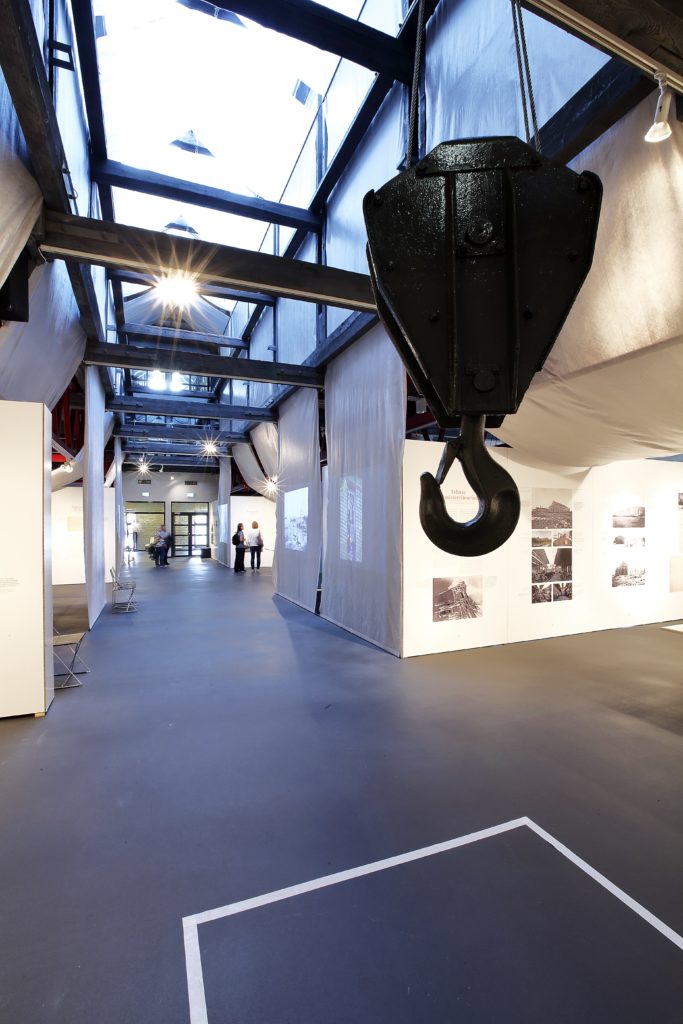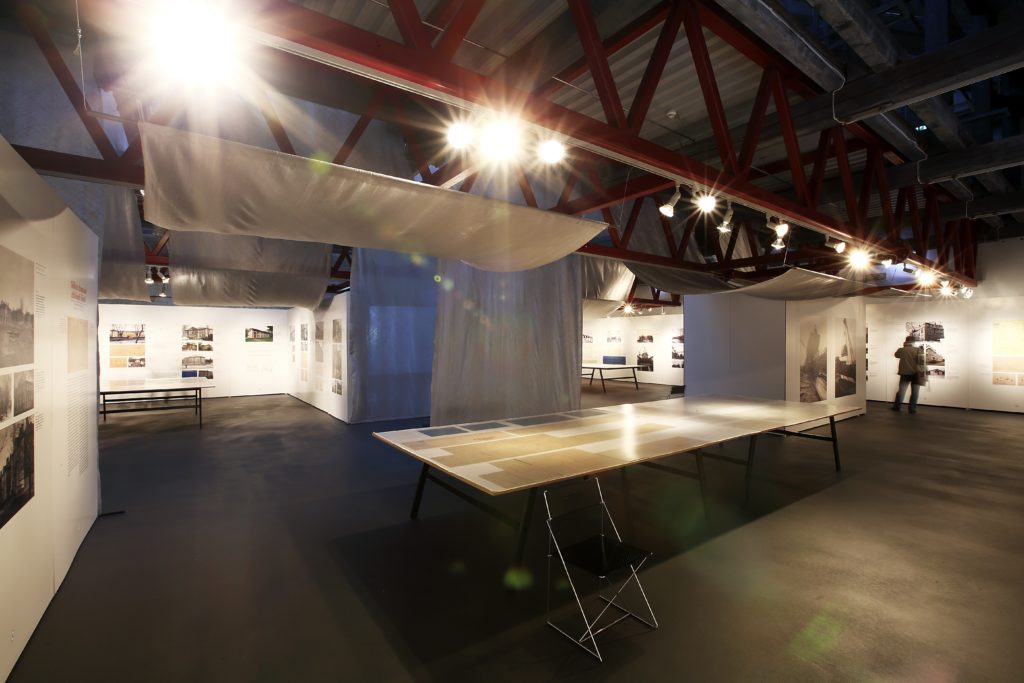A lot is said about Kopli Lines, but little is usually known about it. Many people associate it only with desertion and oblivion, alcoholism and crime, but the history of Kopli actually has an incredibly rich and intriguing fabric. Now seemed to be the right time to introduce it also to the wider public. Even less is known about the Russo-Baltic manufacturing facilities that have remained a closed industrial area to this day. Until recently, the cultural heritage value of Kopli district with the Russo-Baltic shipyard and its residential area as a built environment and also the district’s potential in terms of urban design have been greatly undervalued. The other impetus for the exhibition came from the highly valuable, versatile and visually effective archive materials – old photos, glass plate negatives and beautiful large-scale sketches… Earlier researchers (Robert Nerman studying the suburbs of Tallinn, Boris Kirikov specialising in the works of architect Aleksandr Dmitriyev who designed shipyard buildings during the tsarist era etc) could only publish the given material in small black-and-white formats marked by poor printing quality. Our exhibition and book allowed us to make the immaculate clarity of the old pictures and the beauty of the hand-made drawings available to the public for the very first time.






Kultuurkapitali tegevuspreemia pälvinud projekti puhul oli tegemist muljetavaldava ja süvitsimineva uurimustööga, mis puudutab piirkonda, mis on just praegu põhjapanevate muutuste vallas – nii lisasid näitus ja raamat ühiskondlikus teadvuses valdavalt kinnisvaraarenduse kontekstis käsitletud alale oluliselt rohkem tähenduskihte ja teadvustas ruumilise mälu olulisust.
Ingrid Ruudi,
Eesti Kultuurkapitali arhitektuuri sihtkapitali aastapreemiate žürii esinaine




Although as a resident of the so-called Professors’ village I had a pretty good overview of the history of the district, I still found a lot of new and interesting information at the exhibition. I was truly impressed by the fact that in designing the vast industrial complexes in great haste and in anticipation of war, they never compromised the state-of-the-art architecture and engineering. It seems to me that today architects are no longer included in the design of contemporary industrial landscapes and the respective tin plate hangars.
Aldo Mett, resident of Kopli




The most exciting part of the research took place in the Russian State Naval Archive in St Petersburg where my colleagues Robert Treufeldt (MTÜ Castellum), Roman Matkiewicz (Estonian Maritime Museum) and I found a lot of new and intriguing materials not only on the Russo-Baltic Shipyard but also on the entire history of North Tallinn. We discovered less-known material also in the factory’s own museum managed by BLRT Grupp – as it was a secret factory during the Soviet years, only a fraction of the respective materials reached the official Estonian archives. The most challenging task was to find a way to make the research-based exposition attractive to regular visitors without making it look like a book hung on the wall – a problem that often plagues that kind of architectural exhibitions. I believe that we managed to do this thanks to the exhibition designers. The various film clips (historic newsreels) projected on fabrics and featuring the different stages of the history of Kopli were particularly effective, as the ‘living pictures’ on the flowing veil-like fabric appeared ghostly and mysterious as if denied memories resurfacing once again.
Oliver Orro














































































































































































































